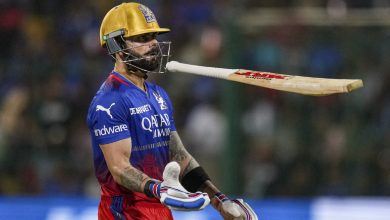No Nadal or Federer, but there is a ‘Big Three’ at the French Open

Consency on the women’s tennis tour is an exception, not the norm. The last 16 Grand Slam tournaments have seen 10 different singles champions, including a qualifier ranked outside of the top 150. At recent Majors, early upsets have been regular, main draws have felt lopsided, and chaos has reigned supreme.
Over the past year, however, a settled pattern has developed on tour, thanks to the trio of Iga Swiatek, Aryna Sabalenka and Elena Rybakina. They have won the last four Grand Slams among themselves, mopped up the other big tournaments, and established themselves in the top 5 of the rankings. In time for the French Open, which kicked off on Sunday, they have ramped up their form on clay – each winning notable tune-up events in Stuttgart, Madrid and Rome respectively.
Swiatek, the World No. 1, leads the pack, especially on her favoured surface of clay. While the Pole has been unable to replicate her dizzying heights of last year – a 37-match winning streak is a difficult feat to live up to – her form has not dipped too much. She has won two WTA 500 titles and reached two WTA 1000 finals in 2023 so far.
So, Swiatek’s level is not to blame for this year’s French Open feeling less like a one-horse race. Instead, it is down to the improvements made those who were left in her wake last year.
Sabalenka had to put in the work to shed the mental combustibility and occasionally disastrous serve that kept her out of contention at the Majors. Endless training on her footwork, an entirely new service motion after engaging a biomechanics special, and smarter, mature tactics all allowed her to cut the gap on Swiatek, as she made her mark at the elite level winning the Australian Open.
Aryna Sabalenka in action during her first round match against Ukraine’s Marta Kostyuk REUTERS
Rybakina’s game resembled her peak when she won Wimbledon last year, but to make her way to the top, she had to grind harder. Without the rankings advantage that would have ordinarily come with her Wimbledon triumph last year, the Kazakh had to face tougher, higher-ranked opponents in the early stages of tournaments. Two 1000 titles and another Major final this year have got her to a career-high World No. 4 ranking.
Rankings and results, however, do not play as much of a role in rivalries as timing. The most captivating tennis rivalries have been forged when the best players in the world consently meet in the latter stages of big events, and this trio has managed that.
In what was one of the biggest statements of her career so far, Rybakina dominated Swiatek in the fourth round at the Australian Open – where she narrowly lost in the final in a three-set epic against Sabalenka. A few months later, at Indian Wells, she beat both Swiatek and Sabalenka in the semifinal and final respectively, and reached the final in Miami soon afterwards.
At home on the slow lane
The Kazakh’s hard-hitting serve, deceptively good return, and redirection of pace are nullified, to an extent, on the slower surface of clay, where Swiatek and Sabalanka’s rivalry blossomed in the early weeks of the spring as they met in two high-quality finals in Stuttgart and Madrid – the first time in 23 years that the world’s two highest-ranked players played back-to-back finals. Swiatek won the former, and Sabalanka made it honours even a fortnight later.
Iga Swiatek in action. (FILE)
Swiatek’s ability to cut angles and dictate play from the baseline through her nearly impenetrable defence is what makes her so dominant on clay. But in Madrid, Sabalenka’s improved footwork, and flat and powerful groundstrokes that flew quicker through the high-altitude air, were able to push the Pole deeper beyond the baseline and arrest control of the rallies.
A week later, Rybakina penetrated Swiatek’s Rome fortress, where she was unbeaten in three years. After losing a frustrating first set 6-2 against Swiatek in the quarterfinals, the Kazakh roared back, winning the second on a tiebreak wearing her opponent down with consently high-quality shotmaking from the baseline. A deciding set was not meant to be as the Pole retired due to an injury scare, but as Rybakina went on to win the title, it was a performance that ensured a third name was added to the French Open favourites’ shortl.
“It (the rivalry) is extra motivation, for sure,” Swiatek told the media ahead of the French Open. “We played so many matches against each other that tactically we know our game pretty well.
“But we also have to come up with some different solutions sometimes, which is pretty exciting, because I never had that yet in my career. I think this is what the ‘Big Three’ (Roger Federer, Rafael Nadal, Novak Djokovic) had to do when they played like 30 matches against each other or even more.”
The best players often get the best out of each other, and the Swiatek-Sabalenka-Rybakina troika has certainly done so this year. Still in its early stages, the best of their rivalry is yet to come, and the French Open could provide the perfect stage for it.







